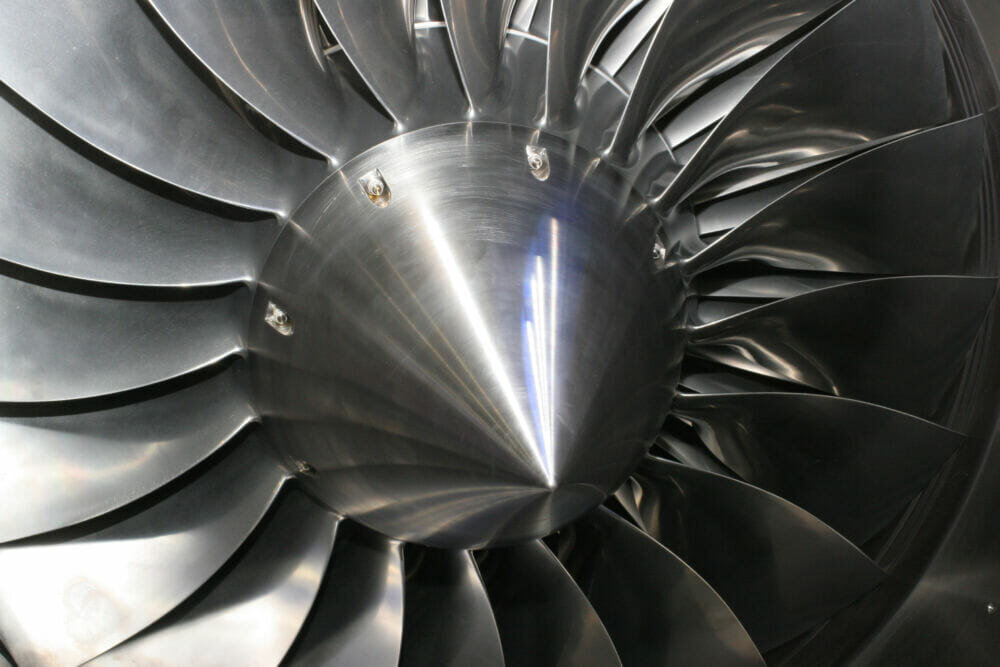Jochen Kern, Head of Sales & Marketing, micrometal GmbH
When manufacturing parts for critical aerospace applications, it is vital that the process chosen is not only cost-effective and allows adherence to time-to-market objectives, but is also able to adhere to extremely tight tolerances and produces accurate parts at the right volume with minimal wastage. micrometal — one of the leading global providers of photo-chemical etching (PCE) services — has considerable experience working with the aerospace sector, which is driven by weight, cost, and time-to-market considerations. Aerospace OEMs must engage with companies like micrometal in order to ensure the efficient and cost-effective manufacture of safety critical precision and micro components. Engaging with a qualified micro manufacturing partner early in the design cycle for new product development is vital to avoid multiple (and costly as well as time-consuming) design and tooling iterations.
COST & TIME
The aerospace sector, like the automotive sector, is seen as one of the backbone industries in many industrialised countries in the world. Fierce competition is a characteristic of the niche, which is driven by imperatives such as cost control and speedy time-to-market cycles.
Aerospace airframe and engine OEMs are constantly demanding dramatic reductions in product development lead-times, and in order to remain competitive, are focused on eliminating waste from all their processes. This pressure from the leading aerospace OEMs has a knock-on effect to all aerospace supply chain companies, which themselves have to slash product development cycle lead times, while at the same time ensuring adherence to strict regulatory controls, and the demand for ever stronger, ever lighter, and ever more complex components.
Supply to the aerospace industry is relatively low in volume terms when compared to other industry sectors (and especially the consumer industry), and so very often, it is innovation as well as cost that differentiates suppliers, there not being the usual economies of scale from mass high volume manufacturing processes. Demand from aerospace manufacturers is often driven by weight concerns, sometimes aesthetics, and always safety, product reliability, and cost.
Pressure on lead times requires analysis of engineering processes, process improvement, and waste reduction, and a concerted amount of attention at the design stage of product development is the only way to achieve the results necessary for competitive supply.
So saying, when it comes to precision and micro parts for aerospace end-use applications, aerospace supply chain OEMs need to embrace the possibilities that exist through the use of photo-chemical etching (PCE), and to engage and work with expert micro manufacturing companies such as micrometal at the very earliest stages of product development.
PHOTO-ETCHING — KEY TAKEAWAYS
PCE is a versatile and increasingly sophisticated metal machining technology, with an ability to mass manufacture complex and feature-rich metal parts and components. The process uses photo-resist and etchants to chemically machine selected areas accurately, and is characterised by retention of material properties, burr-free and stress-free parts with clean profiles, and no heat-affected zones.
Coupled with the fact that PCE uses easily re-iterated and low-cost digital tooling, it provides a cost-effective, highly accurate, and speedy manufacturing alternative to traditional machining technologies such as metal stamping, pressing, CNC punching, and laser and water-jet cutting.
Traditional machining technologies can produce less than perfect effects in metal at the cut line, often deforming the material being worked, and leaving burrs, heat-affected zones, and recast layers. In addition, they struggle to meet the detail resolution required in the ever smaller, more complex, and more precise metal parts that medical device OEMs require. There are instances — typically when an application requires multiple millions of parts and absolute precision is not a priority — when these traditional processes may be the most cost-effective. However, if OEMs require runs up to a few million, and precision is key, then PCE with its lower tooling costs is often by far the most economic and accurate process available.
Another factor to consider in process selection is the thickness of the material to be worked. Traditional processes tend to struggle when applied to the working of thin metals, stamping and punching being inappropriate in many instances, and laser and water cutting causing disproportionate and unacceptable degrees of heat distortion and material shredding respectively. While PCE can be used on a variety of metal thicknesses, one key attribute is that it can also work on ultra-thin sheet metal, even as low as 25 micron foils.
It is in the manufacture of intensely complex and feature-rich precision parts that PCE really finds its perfect application, as it is agnostic when it comes to shapes and unusual features in products to be manufactured. The nature of the process means that feature complexity is not an issue, and in many instances, PCE is the only manufacturing process that can accommodate certain part geometries.
INNOVATION, PARTNERSHIP, & PROCESS REFINEMENT
Lead-time pressures in the aerospace sector mean that so-called concurrent engineering is standard, with the concept of “over the wall” product development being replaced by different “departments” working in parallel. With expertise at the design, tooling, manufacture, assembly, validation, and measurement stages of the micro product and component development process, micrometal can help ensure that the requirement for lengthy and costly design reiterations will be minimised. In this way, cost-effective and timely manufacturing solutions can be exploited through the use of PCE one key characteristic of which is digital tooling as previously mentioned, which allows for very inexpensive design changes without the need for costly and time-consuming re-cutting of tool steel.
Aerospace is an industry sector that is constantly driving innovation, all within the strictures introduced by ever more exacting airworthiness and safety requirements. This stimulates the demand for new materials and processes, which itself leads to more requirements for certification testing, validation, and verification. So saying, it is also vital for supply chain aerospace OEMs to work with product development and precision manufacturing companies that can navigate the validation and regulatory hoops necessary.
When it comes to cost concerns, the onus on aerospace manufacturers is to reduce weight, and so the drive towards miniaturisation is key, as is the use of light-weight parts using materials such a titanium and aluminium to replace heavier metals. This means that aerospace suppliers need to be able to tap into the latest in material and process R&D, and ensure they partner with companies that have experience of cutting-edge processing opportunities.
Because of the highly dangerous environment in which many aerospace components work, there is no room for error in design or manufacture. micrometal’s micro tolerances, and metrology and security capabilities when dealing with aerospace components are vital for project success.
PHOTO-ETCHING & AEROSPACE CONSIDERATIONS
In aerospace applications, absolute precision is key, and for a processing technology, so is the ability to manufacture difficult to work metals with advantageous strength to weight ratios. PCE can successfully process an array of metals including aluminium and titanium, and can achieve tolerances of 7 microns on metal thicknesses of 3 microns to 2000 microns.
Typical aerospace components include heater exchangers, grids, connectors, bending elements, feathers, and shielding components. The process is also very well suited to the production of decorative interior trim for commercial and private aircraft.
The inexpensive and easily and quickly adaptable digital and glass tooling used in the PCE process is the key to driving innovation. The process encourages experimentation and innovation in search of an optimal part, as different designs can be created with little additional cost and without significant impact on lead times. Coupled with PCE’s ability to produce parts of geometric complexity not possible with alternative traditional metal fabrication processes, this underscores the utility for the aerospace industry.
Repeatability of extremely tight tolerances is also hugely important in aerospace applications, and with no tool wear using the PCE process, the millionth part is the same as the fist which supports the longevity and quality of products manufactured
CONCLUSION
PCE is precisely suited to applications where the requirement is for small, precise, complex, feature-rich parts with no burrs, and no stress-related changes in the metal which can occur using alternative metal forming technologies. PCE’s use of digital or glass tooling ensures that multiple tooling iterations that are often necessary to perfect the precise nature of such intricate metal parts are not costly in terms of time or money. In addition, the consistency of the process means no time-consuming and potentially costly retooling and revalidation are necessary. In the case of many aerospace applications, all these attributes combine to make PCE the manufacturing process of choice for especially critical and exacting applications.





